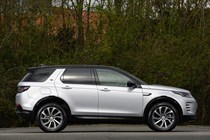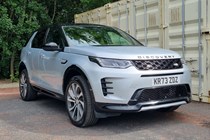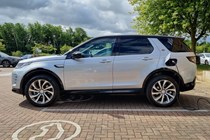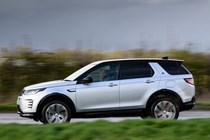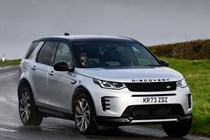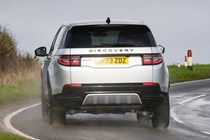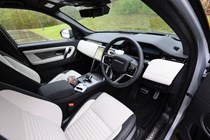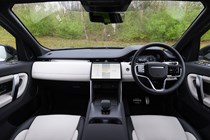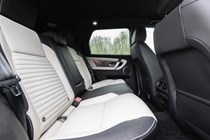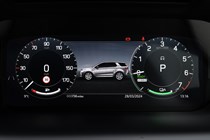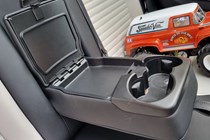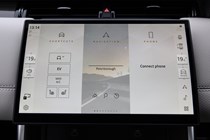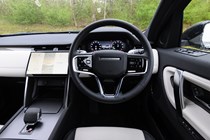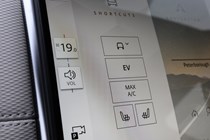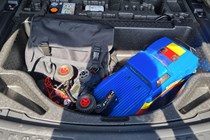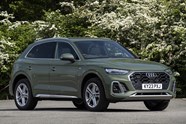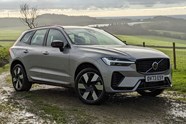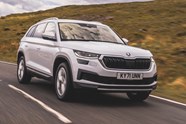
Land Rover Discovery Sport review
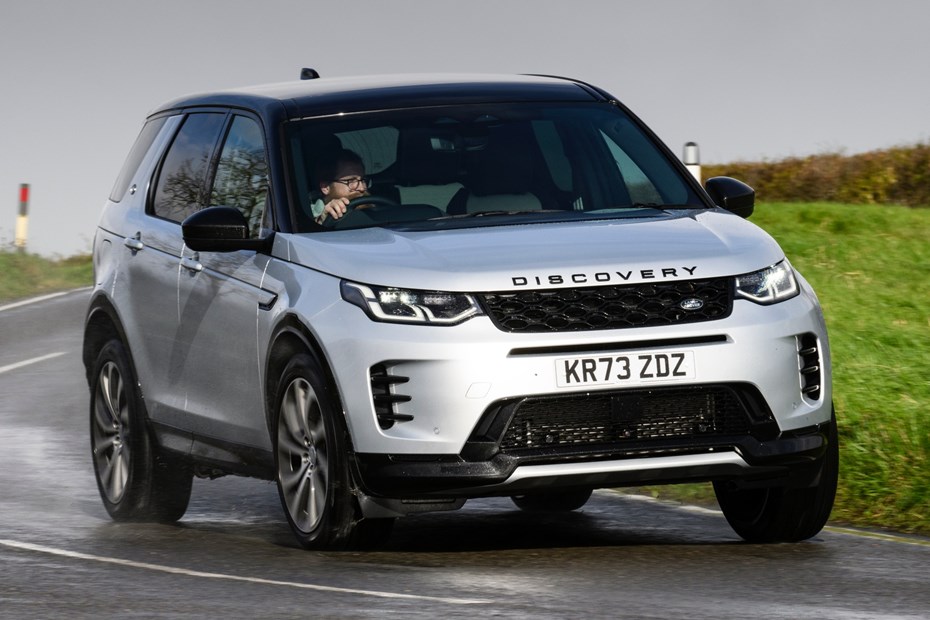
At a glance
| Price new | £44,000 - £57,920 |
|---|---|
| Used prices | £4,906 - £46,434 |
| Road tax cost | £160 - £600 |
| Insurance group | 24 - 45 |
Get an insurance quote with

|
|
| Fuel economy | 24.8 - 47.8 mpg |
| Range | 471 - 677 miles |
| Miles per pound | 3.6 - 6.1 |
| Number of doors | 5 |
| View full specs for a specific version | |
Available fuel types
Petrol
Diesel
Hybrid
Pros & cons
- Feel-good interior
- Impressive off-road
- Comfortable ride
- Tight third row seat space
- No petrol option
- Questionable reliability
Land Rover Discovery Sport rivals
Overview
With sales starting way back in 2015, the Land Rover Discovery Sport is something of an old stager compared to its family SUV rivals. There have been plenty of changes over the years though, including a heavy reworking of the platform to allow a plug-in hybrid (PHEV) version.
Some things don’t change, with the Disco Sport always available as a spacious five-seater, or a five plus two in Land Rover speak. That’s a nice way of saying the third row is a bit cramped. Petrol and diesel models got the choice of seat count, with plug-in hybrids stuck with five.
But the premium SUV market is bursting at the seams, so the Discovery Sport has more competition than ever. The Audi Q5 and Mercedes-Benz GLC appeal to the heart, while practical but cheaper rivals such as the Hyundai Santa Fe and Skoda Kodiaq offer a better seven-seat practicality in a good-to-drive and modern package. It’s also mechanically similar to the smaller but plusher Range Rover Evoque.
There’s a choice of two diesel engines and a plug-in hybrid, with loads of other petrol and diesel engines available in older versions of the Disco Sport. Both the entry-level D165 and punchier D200 feature all-wheel drive, an automatic gearbox and mild-hybrid technology. Both use the same 2.0-litre four-cylinder diesel lump, just with different states of tune.
The plug-in hybrid P300e uses a 200hp three-cylinder 1.5-litre petrol engine, and combines that with a 109hp electric motor to produce a total of 309hp. It’s a four-wheel drive system, although unlike the non-PHEV versions, has an electrically-powered rear axle. This is said to maintain off-road capability but massively improve efficiency.
Unlike most Land Rover models, there’s only three trims to pick from if you’re buying new, starting with the S, moving up to Dynamic SE, and Dynamic HSE. Look on the used market and there’s a far more confusing choice, but remembering S, SE and HSE is the walk up helps when browsing.
Click through to read about the Discovery Sport’s practicality, engines and driving characteristics, before reading our verdict. Not only have we driven many versions of the Discovery Sport during launches and week long loans, we’ve also run a long-term diesel and plug-in hybrid several years apart. If you want to know just how thorough we are, take a look at our how we test cars page for the lowdown.




